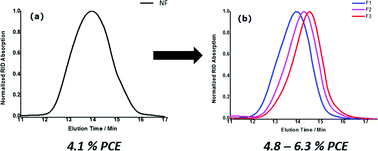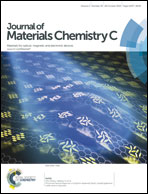Power conversion efficiency enhancement in diketopyrrolopyrrole based solar cells through polymer fractionation†
Abstract
Post polymerisation fractionation of diketopyrrolopyrrole based conjugated polymers through preparative gel permeation chromatography affords a varying range of molecular weight fractions with narrowed polydispersities. When used as the electron donor material in bulk heterojunction solar cells with both conventional and inverted architecture efficiency enhancements in excess of 50% are observed relative to non-fractionated material with the highest molecular weight fraction demonstrating a power conversion efficiency of 6.3%.


 Please wait while we load your content...
Please wait while we load your content...